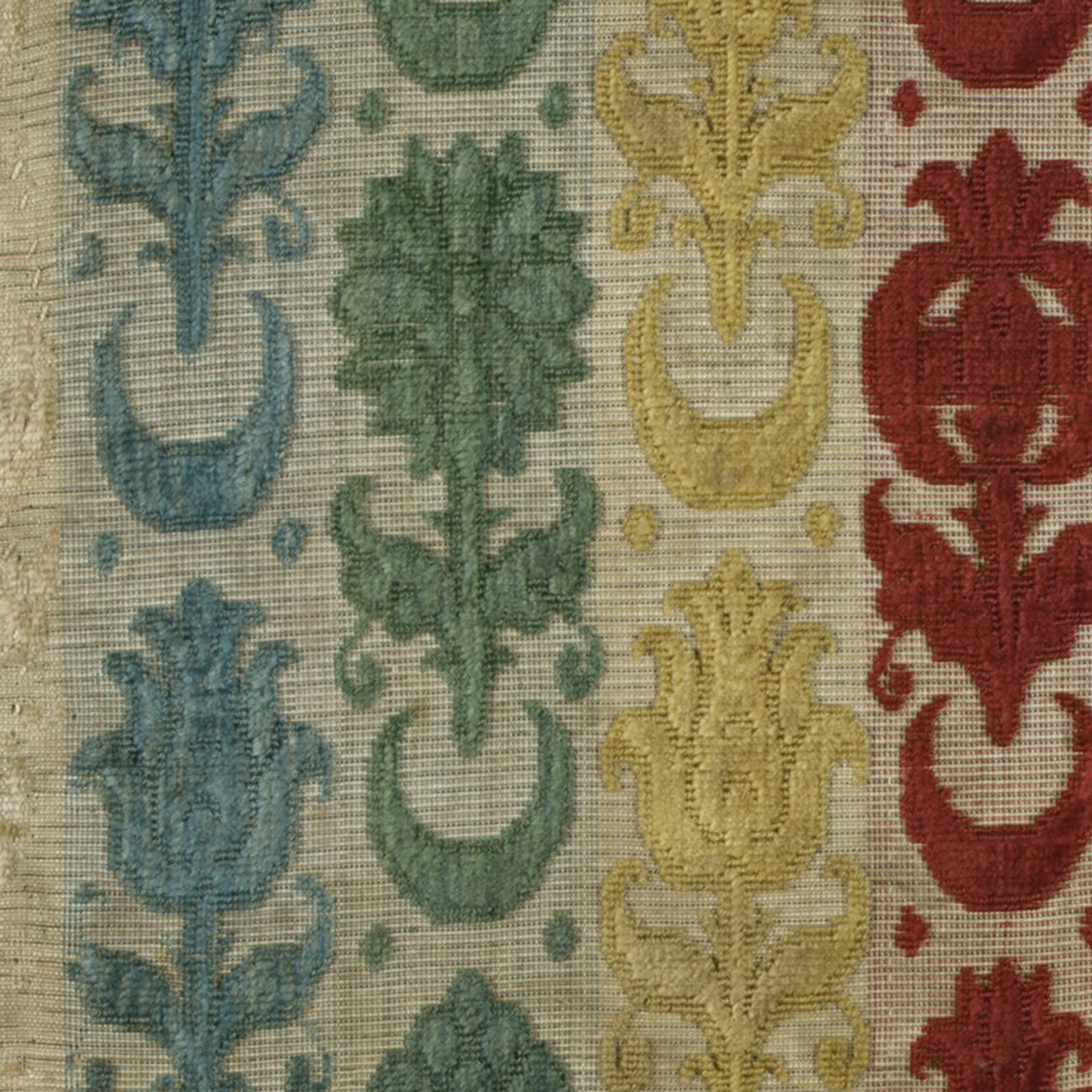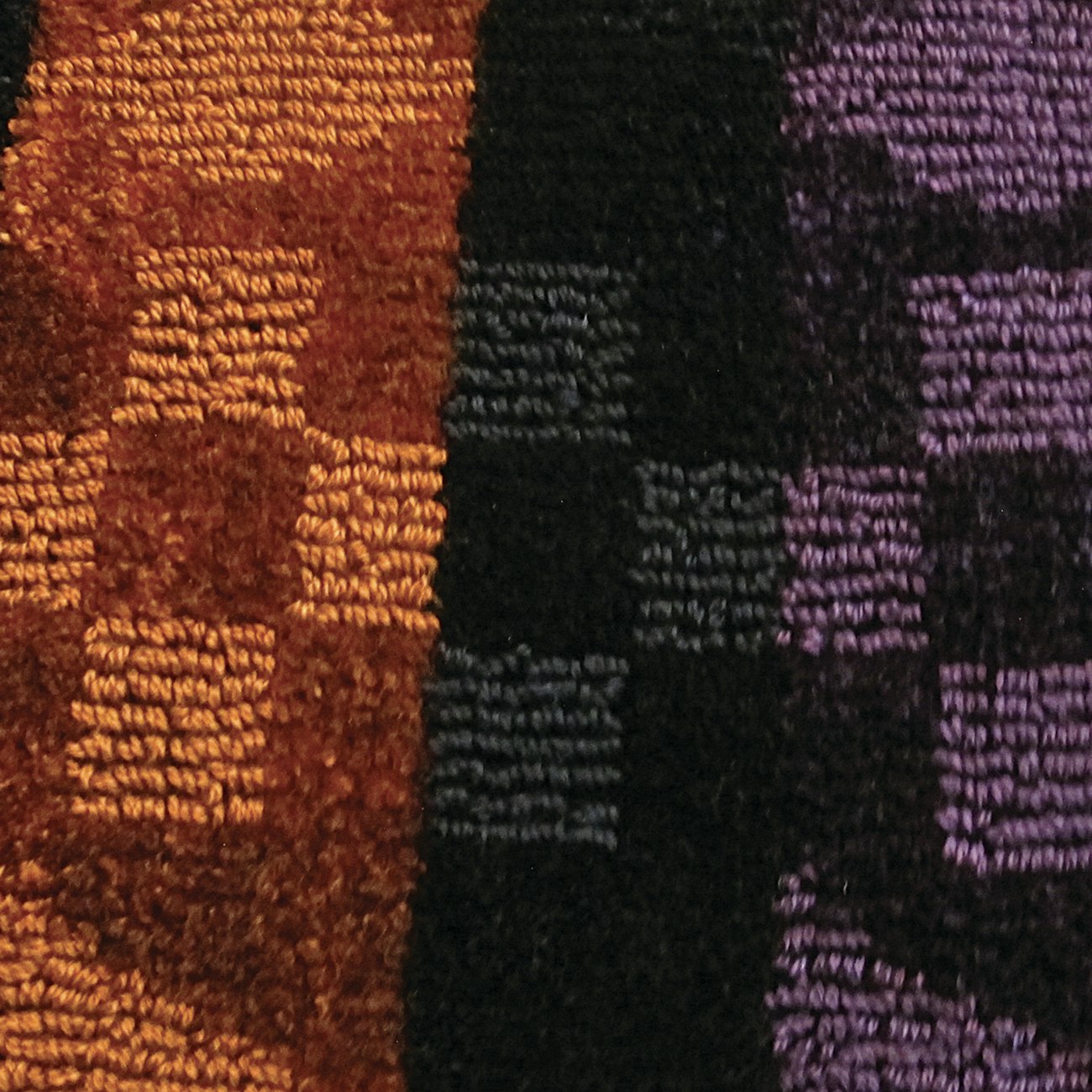Velvet has always been a luxury fabric. Difficult to produce, woven of lustrous silk, and with a rich depth of color and texture from the cut or uncut woven pile, velvet was only available to the very wealthy until quite recently. Understanding the history of velvet makes me even more eager to try weaving it—I want to be a part of that tradition!
Early History of Velvet
Pile weaves, woven from silk and linen, which resemble velvet originated in approximately 2000 BCE in Egypt. In China, between 400 BCE and 23 CE, uncut pile weaves that more closely resemble our modern concept of velvet were developed. Then, the Middle East and eastern Europe came into their velvet zenith, with the most skilled velvet weavers in Turkey, Greece, and Cyprus. But it wasn’t until the late medieval and Renaissance period that the improvement in draw loom technology lowered the price of production and allowed velvet design and innovation to really take off in Italy and Spain.
Renaissance Velvet

Velvet weaving of the caliber of this Italian velvet from the 17th may be out of your grasp for now, but you can learn how to weave velvet and other pile weaves! Photo credit Rogers Fund, 1909; Metropolitan Museum of Art on Wikimedia
Take a look at the truly gorgeous example of Italian velvet above. Florence was a hub of the arts in the late-medieval and early Renaissance periods, and velvet was a major economic phenomenon there. Competition was stiff among silk velvet weavers in the major Italian velvet centers: Venice, Florence, and Genoa. Techniques were so closely guarded within the production guilds that skilled craftspeople were often forbidden from leaving the city where they lived and worked, to prevent rivals from learning their secrets.
Velvet generated enormous wealth, making the fortunes of many and exhibiting the wealth of others. Wealthy families like the Medici patronized silk weavers and commissioned elaborate velvet cloth decorated with their family crest. Other common motifs, such as pomegranates, were steeped in religious significance.
These velvets, woven from pure silk, dyed deep, royal colors, embellished with threads gilt in fine silver, and patterned with cut and uncut sections of pile, sent a clear message. One look at the richly shifting colors, the luxurious texture, and the elaborate decoration made it clear that this was fabric fit to adorn a king, well out of reach for the poor or even the middle class. This attitude continued well through the history of velvet, in the Renaissance, into the Napoleonic era, and beyond.
 Before you start weaving complex flowers and leaves, learn with Deb how to weave velvet and pile diamonds and checks! Photo from Pile Weaves with Supplemental Warps video
Before you start weaving complex flowers and leaves, learn with Deb how to weave velvet and pile diamonds and checks! Photo from Pile Weaves with Supplemental Warps video
Lucky for us, mass-produced velvet is now widely available, made from a wide variety of materials from silk to cotton to polyester. But there’s still something magical about weaving it by hand. Deb Essen’s technique allows you to do so without the need for a special loom with a supplemental warp beam. You can learn all about it in Pile Weaves with Supplemental Warps.
Published September 26, 2016 Revised June 26, 2023

